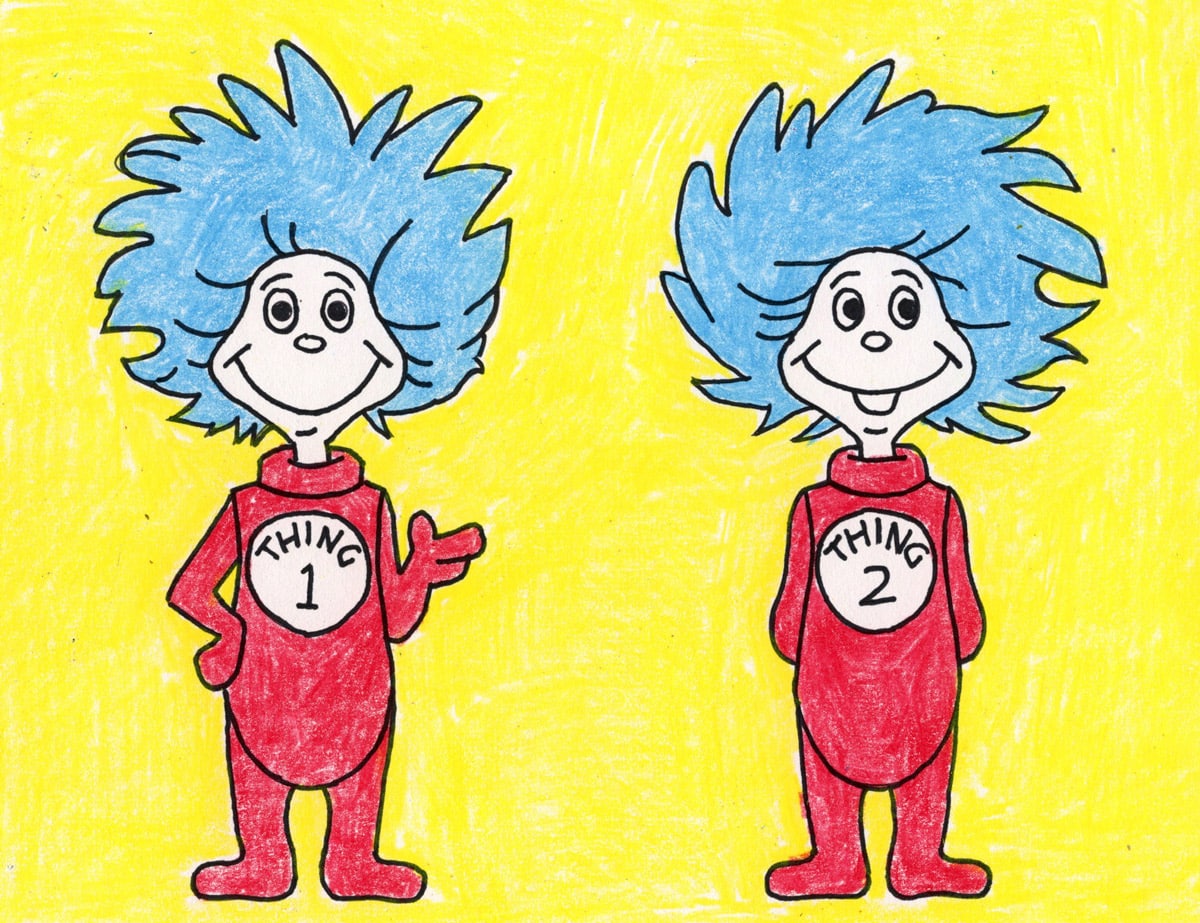
There are thousands of invisible energy channels that run through our bodies, carrying prana—the life force energy that sustains, supports, and nourishes our physical, mental, and spiritual well-being. These channels, known as Nadis, flow through our body like rivers of energy, interconnecting and nourishing every cell and organ within us. Among these countless Nadis, there are three primary pathways that play a significant role in the circulation of prana: Ida, Pingala, and Sushumna. Understanding their location, significance, and function can unlock a world of profound healing, transformation, and spiritual development.
What are nadis?
In Sanskrit, nadi means “stream, tube, or pipe”. In ancient yoga and Ayurvedic traditions, practitioners believe that there are thousands of nadis or subtle energy channels traveling throughout the physical body. They are not visible to the naked eye yet run alongside the nerves, blood vessels, and other anatomical structures. Their primary function is to carry prana, life force energy, throughout the body. These subtle channels can be thought of as the highways through which prana flows, ensuring the vitality and balance of our physical, mental, and spiritual well-being.
Significance of nadis in yoga
One of the primary goals in hatha yoga is to balance and harmonize the flow of prana throughout the body. Hatha translates to “ha” meaning sun and “tha” meaning moon, referencing the two of the primary channels through which prana flows—the Ida and Pingala nadis. The asanas, pranyamas, mudras and bandhas utilized in a traditional hatha yoga practice help clear any blockages in these energy channels, allowing prana to flow freely—enhancing well-being, boosting awareness, and elevating consciousness. When the energy is restricted or blocked in the Ida and Pingala nadis, it can lead to physical, mental, and emotional imbalances and disease. This imbalance can prevent a yogi from reaching their full potential both on and off the mat.
The relationship between nadis and chakras
Nadis and chakras are interconnected and mutually influence each other. Chakras are powerful energy centers in our subtle body that are located at specific points on the central energy channel. The Ida and Pingala channels intersect, link and interact with the lower six chakras, creating a complex network of energy flow throughout our being. When the nadis are clear and the flow of prana is unobstructed, the chakras can function optimally, supporting our overall health and vitality. However, if there are blockages or imbalances in the nadis, the flow of energy can become restricted in the chakras, leading to physical, emotional, and mental ailments.
How many nadis are in the body?
According to ancient Sanskrit texts, there are 72,000 nadis in the human body, each serving as a conduit for the flow of pranic energy. There are other texts, like the Shiva Samhitha, that mention the human body having 350,000 channels.
There are 14 primary nadis, believed to have the most significant impact on our spiritual and physical well-being. The chart below summarizes the names and functions of these primary channels:
| Nadi Name | Begins At | Ends At | Function |
|---|---|---|---|
| Alambusha Nadi | Anus | Mouth | Provides energy to organs that eliminate waste |
| Gandhari Nadi | Corner of left eye | Left big toe | Runs alongside and supports Ida |
| Hastijihva Nadi | Right eye | Left big toe | Carries energy to and from the lower body |
| Ida Nadi | Left side of Kanda | Left nostril | Governs feelings, emotions, love, attachment |
| Kuhu Nadi | Throat | Genitals | Sexuality |
| Payaswini Nadi | Right side between pusha and saraswati | Right ear | Complementary to Pingala |
| Pingala Nadi | Right side of Kanda | Right nostril | Governs perception, reason, discrimination |
| Pusha Nadi | Left big toe | Right ear | Supports Pingala |
| Saraswati Nadi | Tongue | Right ear | Provides energy to tongue, mouth, throat |
| Shankhini Nadi | Throat | Anus | Flows between Saraswati and Gandhari along the left side of Sushumna |
| Sushumna Nadi | Kanda | Sahasrara chakra | Central channel for prana |
| Varuna Nadi | Muladhara chakra | Anahata chakra | Provides energy to whole body and the nervous system |
| Vishvodhara Nadi | Muladhara chakra | Manipura chakra | Provides energy to digestive system |
| Yashaswini Nadi | Right big toe | Right ear | Provides energy to right limbs |
The 3 main nadis
Among the 14 major energy pathways in the human body, there are three main nadis—the Ida, Pingala, and Sushumna. Each of these has distinct qualities and functions which play a crucial role in the flow of cosmic energy within the body. Understanding the characteristics of these nadis is essential to harness their power and unlock the full potential of our being.
Kanda and Yukta Triveni
The Ida, Pingala, and Sushumna channels begin at the Kanda—a bulb like structure situated just below the Muladhara or Root Chakra at the base of the spine. Yogis often describe it as a small, oval-shaped reservoir that contains the Kundalini, often represented as the coiled serpent. The Kanda is the storehouse of dormant vital energy and is responsible for distributing prana throughout the body.
The three main channels of Ida, Pingala, and Sushumna originate at a specific point within the Kanda known as Yukta Triveni. Derived from the Sanskrit language, “Yukta” means “combined” and “Triveni” stands for “three streams.”
These three streams meet again at the Mukta Triveni, located at the third eye or Ajna Chakra. When the prana of these three main channels merge at the Mukta Triveni it creates a harmonious balance of feminine and masculine energies, leading to spiritual awakening and self-realization.
1. Ida nadi: the lunar left channel
The Ida or Chandra nadi starts at Yukta Triveni and travels up the left side of the spine, ending at the left nostril. It is often referred to as the “Moon Channel” because of its feminine and cooling qualities. When this channel is balanced and flowing freely, it supports a calm and receptive state of being. It is also connected to the parasympathetic nervous system, promoting relaxation and rest.
Individuals with dominant Ida energies are typically introspective, imaginative, and often have a penchant for creative endeavors. They are characterized by their calm demeanor and emotional depth.
- Energetic functions: Governs mental processes and is associated with intuitive thinking. Reflects qualities of the moon, such as receptivity and coolness.
- Color Association: White, symbolizing purity and clarity.
- Personality Traits: Individuals with dominant Ida energies are nurturing and intuitive but may lack assertiveness.
2. Pingala nadi: the solar right channel
The Pingala or surya nadi starts at Yukta Triveni and travels up the right side of the spine, ending at the right nostril. It is often referred to as the “Sun Channel” due to its masculine and heating qualities. The Pingala Nadi is responsible for vital life processes and imparts vitality, efficiency, and strength. Balancing this channel can help enhance motivation, productivity, and active engagement with the external world. Individuals with a dominant Pingala energy are characterized by their dynamic nature, vibrant physicality, and strong logical processing ability.
- Energetic functions: Serves as the source of vital life force or prana. Symbolizes sun-related qualities like brightness and dynamism.
- Color Association: Red, indicative of vigor and vitality.
- Personality Traits: Dominant pingala energy leads to traits such as creativity and assertiveness but can diminish lunar qualities like empathy.
3. Sushumna nadi: the central channel
The Sushumna nadi is the central channel that runs along the spinal cord’s length, from the Yukta Triveni at the base of the spine to the crown chakra at the top of the head. It is considered the most important pathway for Kundalini awakening and enlightenment.
Significance of sushumna
The Sushumna Nadi acts as a harmonizing and integrating force between Ida and Pingala energies. When the energy flows freely through Sushumna, it brings about a state of equilibrium, stillness, and harmony. This is a state of balance between the masculine and feminine aspects of our energy system or solar and lunar energies. A balanced Sushumna fosters inner peace, enhances concentration, and promotes overall well-being.
Pathway to higher consciousness
When Kundalini energy is awakened and rises through the Sushumna Nadi, it can lead to a profound spiritual awakening and transformation. This awakening can cause heightened states of consciousness, expanded awareness, and a deep sense of connection to the divine. When the Sushumna is active, it is recommended to rest, meditate, practice yoga, chant mantras, and send out prayers and blessings to loved ones.
When a yogi creates a continuous energy flow centered through Sushumna, it can lead to transcendence and spiritual enlightenment. Sushumna is also referred to as Brahma Nadi, which recognizes the importance of activating this channel for spiritual development. To reach this level of awakening, a yogi must strengthen the physical body, purify the nadis, cultivate prana, balance the chakras, activate kundalini, and pierce the three granthis. This piercing is often very uncomfortable and may cause pain, disease and mental instability as the energy tries to break through the blockages in the nadis.
Granthis
The three Granthis are energetic knots or blockages that exist within the subtle body. These Granthis are located along the central channel, and they obstruct the awakening and the ascent of kundalini shakti.
- Brahma Granthi: The first granthi is located at the base of the spine, near the Muladhara Chakra. It is associated with worldly attachments, survival instincts, and material desires. The Brahma Granthi represents our primal nature and our identification with physical existence. Blockages in this area can manifest as feelings of fear, insecurity, and a limited perspective on life.
- Vishnu Granthi: The second energy knot is situated in the heart region near the Anahata Chakra. The Vishnu Granthi represents our emotional attachments and conditional love for others. It symbolizes our ego identity and ties to relationships and societal expectations. When this granthi is blocked, it often leads to emotional disturbances, such as jealousy, possessiveness, and an inability to let go.
- Rudra Granthi: The final granthi is known as Rudra or Shiva Granthi. It resides in the Ajna Chakra or third eye region, between the eyebrows. This knot symbolizes our spiritual growth and connection with higher consciousness. The Rudra Granthi involves transcending limited beliefs, expanding awareness, and realizing one’s true nature beyond individuality. When this knot is obstructed, individuals may experience confusion, lack of clarity in their purpose or existence, and difficulties in accessing higher states of consciousness.
In yogic philosophy, it is believed that these three energetic knots need to be unravelled for self-realization and spiritual evolution to occur fully. Various practices like pranayama (breath control), mantra chanting, meditation techniques, yoga asanas (postures), mudras (hand gestures), and even certain lifestyle changes are employed to aid in unblocking these energies.
Understanding these intricate energetic aspects of human existence allows individuals on their spiritual journey to become aware of these knots and work towards freeing themselves from them—leading to a state where they can experience profound inner transformation and connect with their true nature.
Activation and purification of nadis
Activating and purifying the nadis is a crucial step towards achieving a harmonious flow of energy, ensuring that our life force energy is circulating unimpeded throughout the body. This process not only promotes overall vitality and wellness, but is also essential for fostering a deeper connection with our spiritual selves and attaining higher states of consciousness.
Nasal dominance
A simple method to determine which nadi is dominate at any given time is through observing nasal dominance. The nadis are closely connected to our breath, and the flow of air through our nostrils can show which nadi is more active. When the left nostril is dominant, it signifies the activation of the Ida nadi, and conversely, when the right nostril is dominant, it indicates the activation of the Pingala nadi. By becoming aware of our nasal dominance, we can begin to understand the current state of our energy flow and work towards balancing the nadis.
Yogis observed the natural cycle of one nostril becoming more dominant in airflow than the other due to autonomic nervous system control over the nasal turbinates. The alternation between the body’s nasal dominance happens approximately every two hours and is known as the nasal cycle. The interesting intersection between this physiological phenomenon and the shift in subtle energy is observed in how nasal breathing can influence which nadi predominates at a specific moment.
The nasal cycle refers to the alternating congestion and decongestion of the nostrils, which occurs naturally throughout the day. When we inhale, one nostril is more dominant than the other, while the other nostril experiences reduced airflow. This dominance switches approximately every 90-120 minutes, and it is believed to be associated with the activation of the sympathetic (active) and parasympathetic (restful) nervous systems.
When the flow of air through our nostrils is perfectly balanced, it indicates the activation of the Sushumna nadi. When the Sushumna nadi becomes active, it allows for a free flow of prana (life force energy) throughout the body, leading to a state of balance and harmony. Activating the Sushumna nadi is an important goal in many yogic and spiritual practices.
Purification of nadis
Purifying nadis is akin to clearing the road for a smoother journey; it expels any obstructions impeding the seamless flow of prana. This purification process is central to removing stagnant energy, fostering a more harmonious energetic balance, and enhancing overall well-being.
When the nadis are purified and balanced, the flow of prana becomes smooth and unrestricted. This leads to improved physical, mental, and emotional well-being.and heightened spiritual well-being.
Below are three pranayama specifically for purifying the Ida and Pingala nadis:
Techniques for activating nadis
Activating and balancing the nadis can be accomplished through various yoga practices, including asanas (postures) and pranayama (breathing techniques). Pranayama helps to unblock, purify, and balance energies in the nadis, while also harmonizing the sun and moon energies within the body. Specific asanas stimulate different energy pathways and chakras, supporting the flow of prana or energy. To ensure safe and correct practice, it is advisable to learn these techniques under the guidance of a knowledgeable instructor. By incorporating these yogic techniques into your practice, you can enhance your overall energetic well-being.
Here are some of the key yogic techniques for activating your energy channels:
- Hatha Yoga: The physical postures and movements of Hatha Yoga, help to release energy blockages in the nadis, promoting an improved flow of prana. The practice strives to balance the sun (Pingala) and moon (Ida) energies within the body.
- Pranayama (Breathing Exercises): Specific breathing techniques are employed to regulate and direct the prana throughout the nadis. Energizing practices such as Ujjayi, Kapalabhati, and Bhastrika Pranayama increase the flow of prana, stimulating the nadis and awakening dormant energy within the body. These techniques involve controlled inhalation, exhalation, and retention of breath, helping to cleanse and purify the energy channels.
- Bandhas (Energy Locks): There are certain contractions or locks within the body, such as Mula Bandha (root lock), Uddiyana Bandha (abdominal lock), and Jalandhara Bandha (throat lock), which, when applied during yoga practice, can aid in directing prana through the nadis.
- Meditation: Focused meditation can lead to deep states of relaxation and mental clarity, which are conducive to opening and cleansing the nadis. Meditation on specific chakras can also stimulate the flow of energy through associated nadis.
- Chanting and Mantras: The vibration from chanting is believed to purify and activate the nadis. Mantras are specific sounds or phrases that, when recited, can influence the energy flow within the body.
- Kriyas (Cleansing Practices): These are purification rituals that can range from nasal cleansing (Jala Neti), to abdominal cleansing (Agnisar Kriya), and more. Such practices cleanse the physical body but also have subtle effects on the nadis.
- Mudras (Hand Gestures): Specific hand gestures are said to influence energy flow and stimulate different areas of the body connected to the nadis.
- Ayurvedic Practices: Ayurveda, the sister science of yoga, offers various techniques to activate the nadis. This includes specific dietary recommendations, herbal supplements, and the use of specific oils and aromatherapy to support the flow of energy through the nadis. Ayurvedic practices such as self-massage (abhyanga) and detoxification techniques (panchakarma) can also help to activate and clear the nadis. Ayurvedic practitioners use Nadi Pariksha or pulse analysis, a traditional technique that assesses the balance of the three doshas—Vata, Pitta, and Kapha—to understand the individual’s health status and determine suitable treatments.
Final thoughts
Ida, Pingala, and Sushumna—these three primary channels are not just pathways of energy; they are the harbingers of balance, the architects of our inner harmony, and the keys to unlocking our highest potential. As we journey through life’s myriad experiences, boosting our awareness and embracing the wisdom of these subtle energy streams can lead us to a more profound state of health, vitality, and spiritual awareness.





